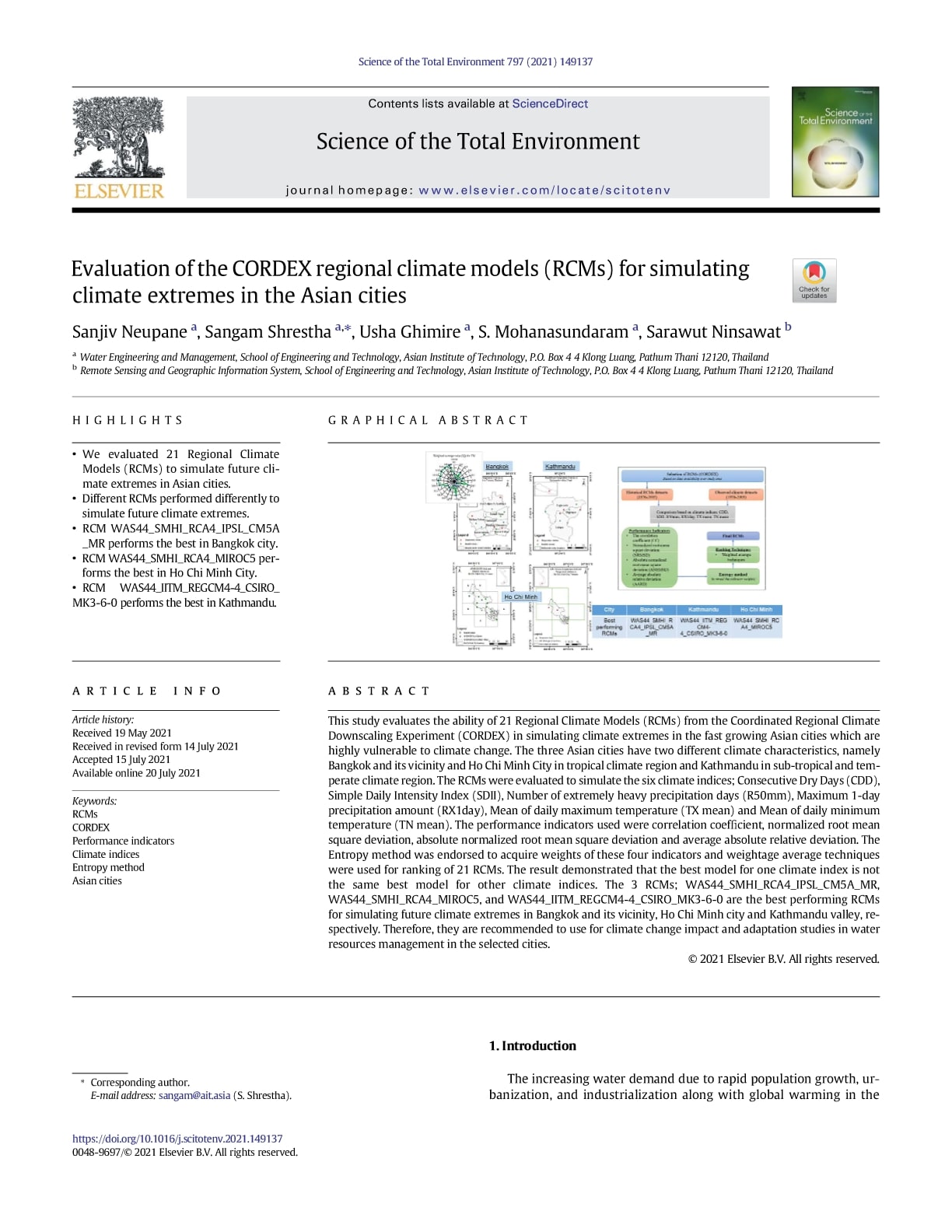This study evaluates the ability of 21 Regional Climate Models (RCMs) from the Coordinated Regional Climate Downscaling Experiment (CORDEX) in simulating climate extremes in the fast growing Asian cities which are highly vulnerable to climate change. The three Asian cities have two different climate characteristics, namely Bangkok and its vicinity and Ho Chi Minh City in tropical climate region and Kathmandu in sub-tropical and tem-perate climate region. The RCMs were evaluated to simulate the six climate indices; Consecutive Dry Days (CDD), Simple Daily Intensity Index (SDII), Number of extremely heavy precipitation days (R50mm), Maximum 1-day precipitation amount (RX1day), Mean of daily maximum temperature (TX mean) and Mean of daily minimum temperature (TN mean). The performance indicators used were correlation coefficient, normalized root mean square deviation, absolute normalized root mean square deviation and average absolute relative deviation. The Entropy method was endorsed to acquire weights of these four indicators and weightage average techniques were used for ranking of 21 RCMs. The result demonstrated that the best model for one climate index is not the same best model for other climate indices. The 3 RCMs; WAS44_SMHI_RCA4_IPSL_CM5A_MR, WAS44_SMHI_RCA4_MIROC5, and WAS44_IITM_REGCM4-4_CSIRO_MK3-6-0 are the best performing RCMs for simulating future climate extremes in Bangkok and its vicinity, Ho Chi Minh city and Kathmandu valley, respectively. Therefore, they are recommended to use for climate change impact and adaptation studies in water resources management in the selected cities.

